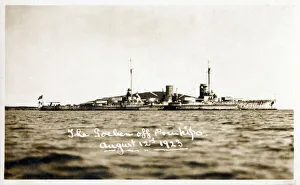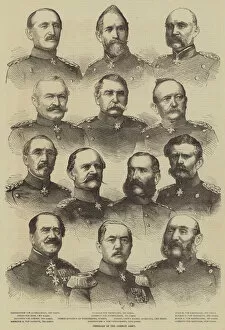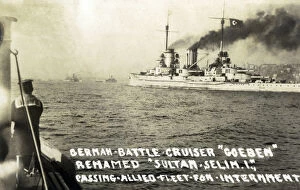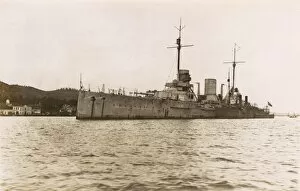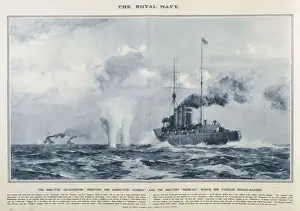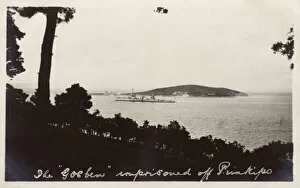Goeben Collection
"Goeben: A Symbol of Power and Transformation in the Turbulent Waters of WWI" S. M. S
All Professionally Made to Order for Quick Shipping
"Goeben: A Symbol of Power and Transformation in the Turbulent Waters of WWI" S. M. S. Goeben, a formidable German battlecruiser, played a pivotal role during World War I as part of the German Navy stationed in Turkey. Commanded by Karl Friedrich Steinmetz, this vessel became infamous for its daring exploits and strategic maneuvers. During the Great War, HMS Gloucester valiantly confronted Goeben's might in an epic clash that showcased both ships' prowess. However, it was ultimately the Turkish battlecruiser Yavuz Sultan Selim (formerly known as Goeben) that emerged victorious from these tumultuous waters. In 1923, after being handed over to the Turks again under the Near East Treaty proposal, Goeben found itself guarded by destroyers Sirdas and Sparrowhawk off Buyukada (Prinkipo), Istanbul. This momentous event marked a turning point as it symbolized Germany's changing alliances and Turkey's growing naval strength. Even generals in the German Army recognized Goeben's significance; their engravings immortalize this mighty warship forever etched into history. Renamed Sultan Selim I by its new owners, this ex-German battleship underwent further transformations while docked at a Turkish floating dock on the Bosphorus. It stood proudly as Ottoman Navy flagship but also served time imprisoned off Buyukada—an ironic twist for such a powerful vessel. Notorious for its involvement in various conflicts across different shores, including bombarding Algerian ports during WWI, SMS Goeben left an indelible mark on global military history. Its presence within Turkish waters added complexity to an already intricate geopolitical landscape during those turbulent times. Today we remember "Goeben, " not just as a ship but as a symbol—a testament to power dynamics shifting amidst war-torn seas—and how one vessel can embody the transformative forces that shape our world.




